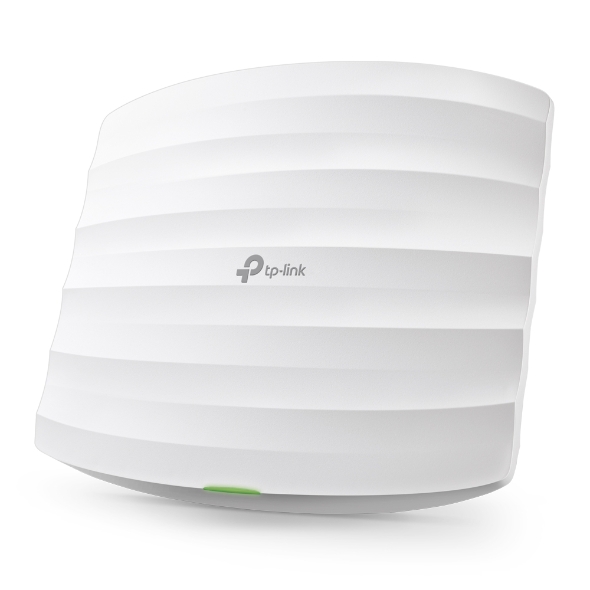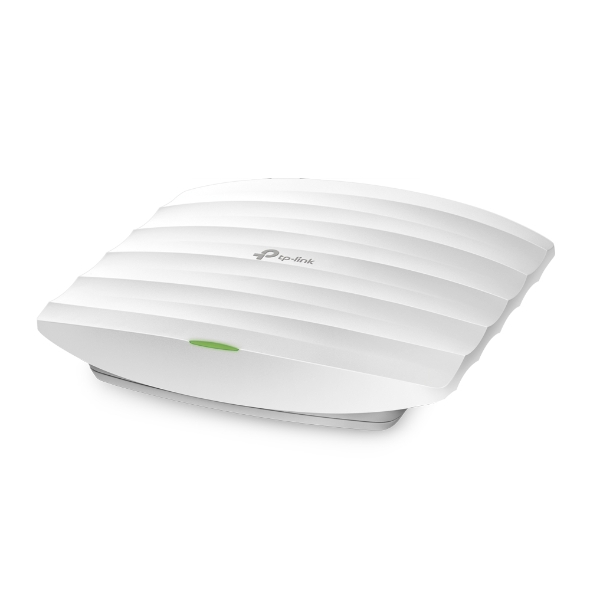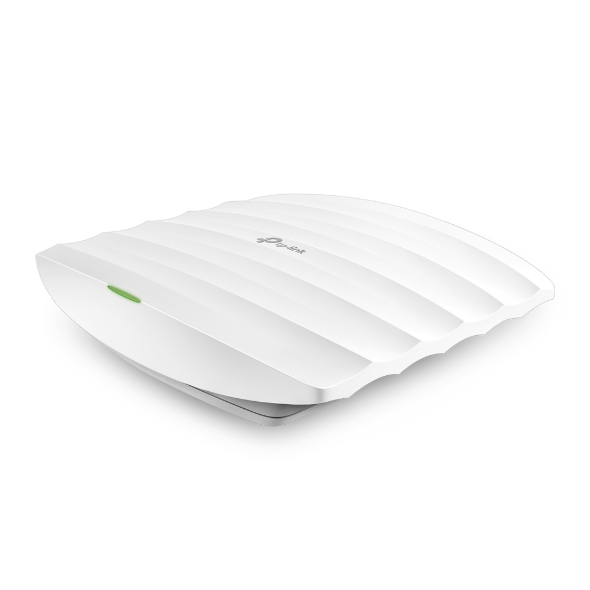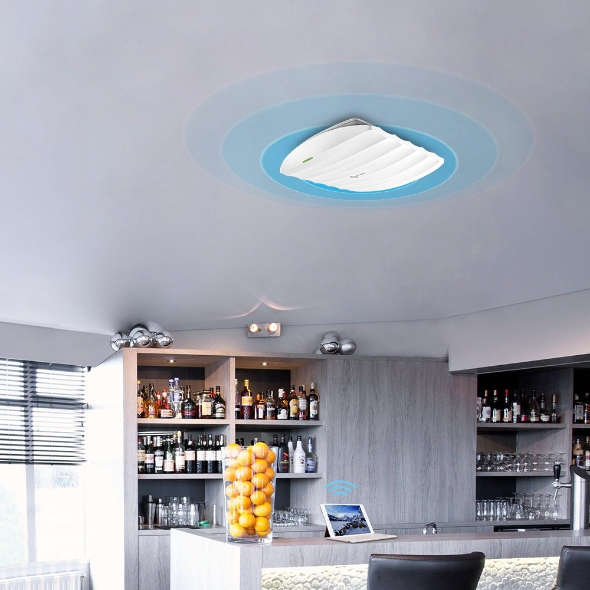EAP115
End of LifeN300 Wireless N Ceiling Mount Access Point
-
Omada cloud software controller center controls hundreds of EAPs
-
Powered by standard 802.3af PoE for convenient installation
-
Simple mounting design for easy attachment to a wall or ceiling
-
Web captive portal provides a professional and convenient way to get the Wi-Fi access
-
Advertising page, Facebook Wi-Fi and SMS authentication help to boost your business
-
Enterprise-class Wi-Fi security help to lower network security threats
-
Multi-SSIDs separates the different groups of users with different resource privileges
-
Supports management VLAN for an enhanced network management
An Affordable, Scalable Business Wi-Fi Solution
300Mbps Wireless N Ceiling Mount Access Point
Omada SDN—Smarter Cloud Solution for Business Networking
Omada Software Defined Networking (SDN) platform integrates network devices including access points, switches and gateways, guaranteeing a powerful business network with higher efficiency, higher security, and higher reliability.
Cloud-Based Controller
Hassle-Free Centralized Cloud Management:
100% centralized cloud management of the whole network from different sites—all controlled from a single interface anywhere, anytime.
Captive Portal
Guest Network with Facebook and SMS Support
The captive portal helps maintain only authorized guests to use the network, presenting devices with a convenient, user-friendly authentication method to grant Wi-Fi access. The addition of SMS and Facebook authentication simplifies the captive portal even further to simplify connectivity and boost your business.
Easy Mount Design and PoE
Timesaving and Flexible Deployment
The Omada EAP115 is designed for easy installation on any wall or ceiling. The Power over Ethernet (PoE) function allows your network cables to carry electrical power so you minimize cable clutter. It’s one more hardwiring hassle you don’t have to worry about when operating your centralized management system.
Easy Management with the Omada App
Follow configuration instructions on the free Omada app to get set up in minutes. Omada lets you configure settings, monitor the network status and manage clients, all from the convenience of a smartphone or tablet.
Related Cases
-
Barranquilla Plaza Hotel
TP-Link Helps Barranquilla Plaza Hotel Build a Reliable and Efficient Network
Barranquilla Plaza Hotel
TP-Link Helps Barranquilla Plaza Hotel Build a Reliable and Efficient Network
“HBP management has expressed intense satisfaction with their newly implemented solution and 100% of the staff has reported improved internet service. TP-Link’s Omada Solution provided the reliable, high-performance wireless network that HBP and its guests demanded.” -
Chase Grammar School
TP-Link Helps Chase Grammar School Accelerate Learning with BYOD
Chase Grammar School
TP-Link Helps Chase Grammar School Accelerate Learning with BYOD
“The installation was extremely straightforward. It was a simple matter of plug and play. The cluster function in particular saved me many hours con¬figuring each access point. On a day-to-day basis I can log into the closest access point to see how the whole network is performing and make any tweaks necessary.” —Leo Li, Director for Administration at Chase Grammar School -
Ilyas & Mustafa Galadari Group
TP-Link Provides Wireless Coverage to the Staff Accommodation in Dubai
Ilyas & Mustafa Galadari Group
TP-Link Provides Wireless Coverage to the Staff Accommodation in Dubai
“Employees reported great satisfaction with the wireless experience. TP-Link’s EAP Solution provides the reliable, high-performance wireless network to the Staff Accommodation.”
1 Maximum wireless transmission rates are the physical rates derived from IEEE Standard 802.11 specifications. Range and coverage specifications along with the number of connected devices were defined according to test results under normal usage conditions. Actual wireless transmission rate, wireless coverage, and number of connected devices are not guaranteed, and will vary as a result of 1) environmental factors, including building materials, physical objects and obstacles, 2) network conditions, including local interference, volume and density of traffic, product location, network complexity, and network overhead and 3) client limitations, including rated performance, location, connection quality, and client condition.



_4.0-268x246x69mm-7022506807_normal_1577435780429j.jpg)




_4.0-268x246x69mm-7022506807_thumb_1577435780429l.jpg)




_4.0-268x246x69mm-7022506807_large_1577435780429r.jpg)





